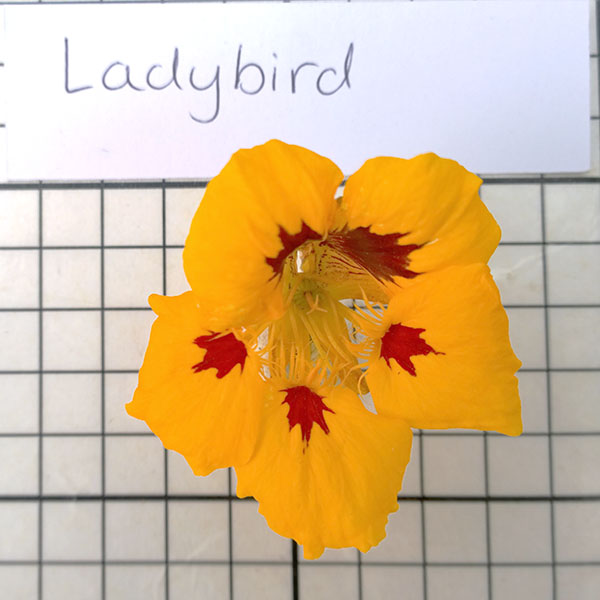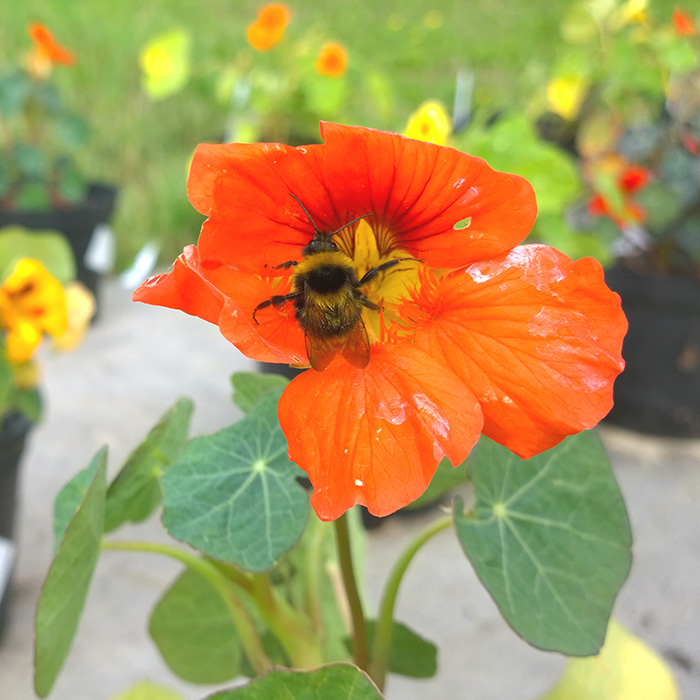This summer, we are working with Hozelock to explore whether foliar feeds can improve nectar and pollen provision for bees. For this trial we will be growing tubs of nasturtium (Tropaeolum majus) and have selected the compact, non-trailing variety ‘Ladybird’.

‘Ladybird’ nasturtium
Nasturtiums (Tropaeolum majus) are native to South and Central America but have been cultivated in Europe since the late Sixteenth Century and are popular with British gardeners. They are perennial in their natural environment, but as they germinate and grow so quickly, they are usually treated as annuals in the British Isles and give a good show of colour right up until the first frosts.
The common name ‘nasturtium’ comes from the scientific name for watercress (Nasturtium officinale), as despite being from different plant families, they are comparable in taste and produce similar mustard-like oils. Their similarity to brassicas means that nasturtiums can be used to attract cabbage white butterflies away from crops like cabbages and cauliflowers.
Both the leaves and flowers are edible and the unripe seeds can be pickled and used like capers. The young leaves have a mild peppery flavour, which becomes more intense in older leaves. The flowers have a similar spiciness, but with a sweet hit of nectar and are delicious in salads or with cheeses.
There are hundreds of different varieties of nasturtium in cultivation and they come in a vibrant range of colours, primarily yellow, red and all shades of orange in between. New cultivars are constantly being developed to extend this range, including very pale yellows, deep burgundies and even shades of pink such as ‘Cherry Rose Jewel’.
The physical characteristics of nasturtium flowers make them well suited to our experiment. Nectar is easily collected from the long spur, and pollen is easily collected from the outwardly projecting anthers.

Garden Bumblebee visiting nasturtium
Nasturtiums are known to be attractive to bumblebees as a source of both pollen and nectar, and the flower shape provides a landing platform for insects. Only very long-tongued bumblebees such as the Garden Bumblebee (Bombus hortorum) can reach the nectar at the bottom of the spur, but when a lot of nectar has accumulated, other species are able to access it too.
Nasturtiums perform well in poor soil, so it will be interesting to see what effect the feeds have on flowering, and nectar and pollen production.
Follow updates on Twitter and Facebook using #HozelockBlooms, and look out for new blog posts.

